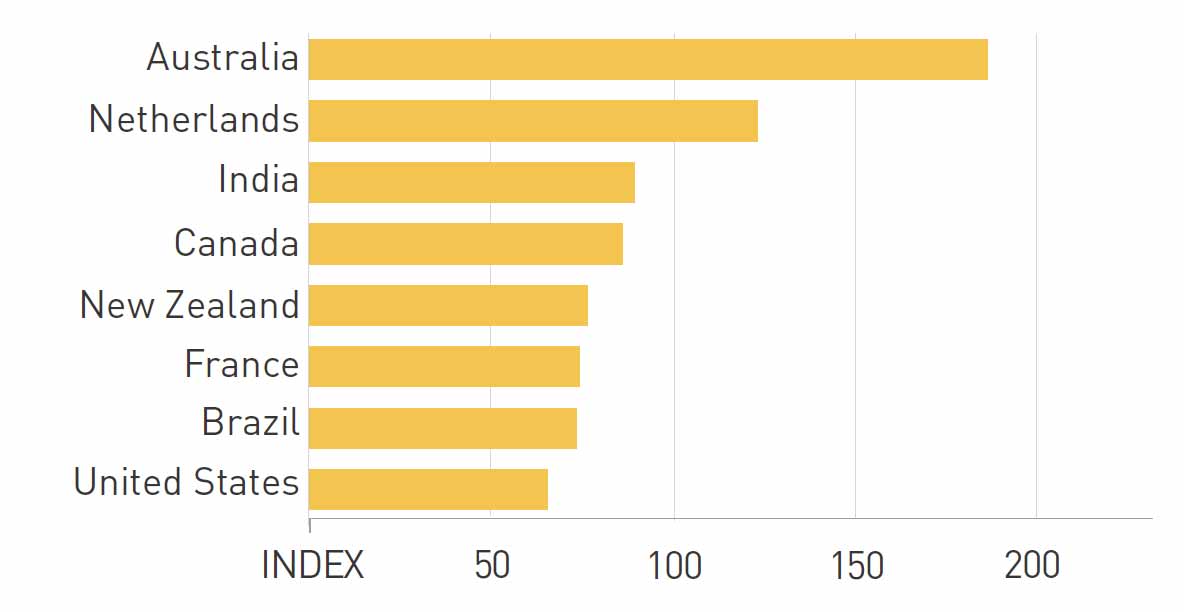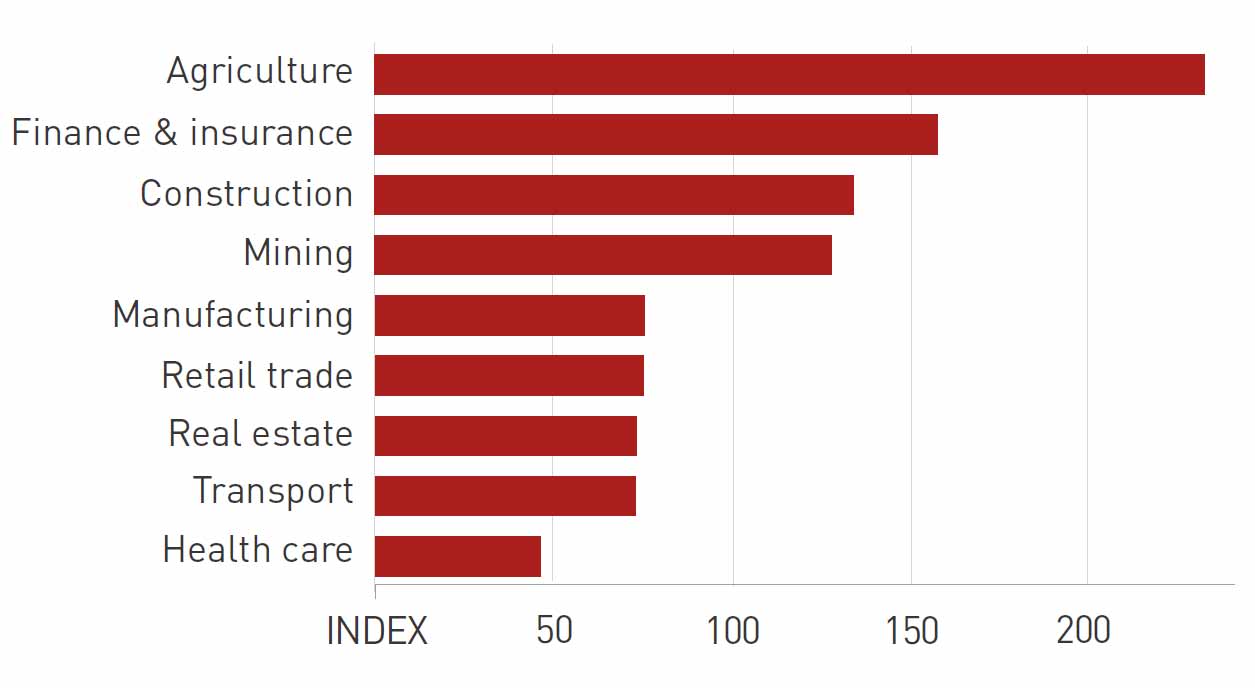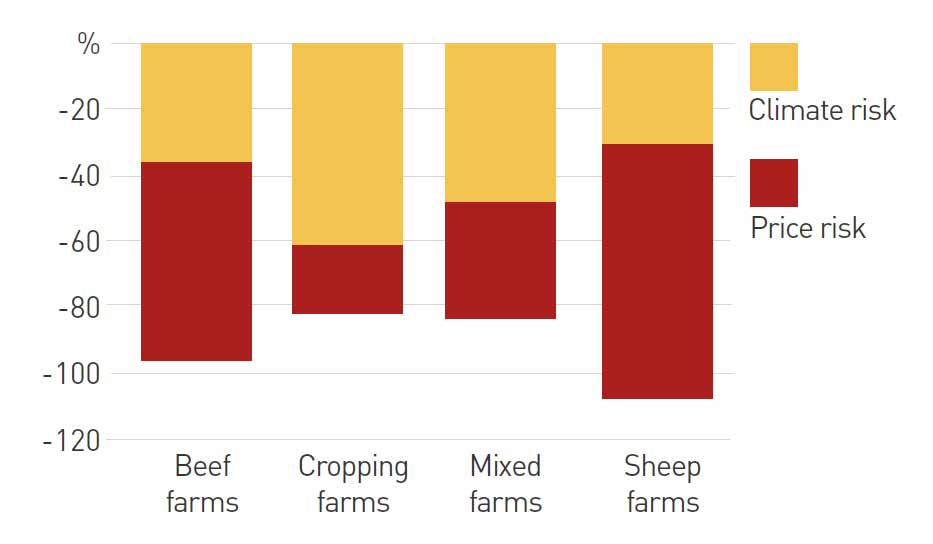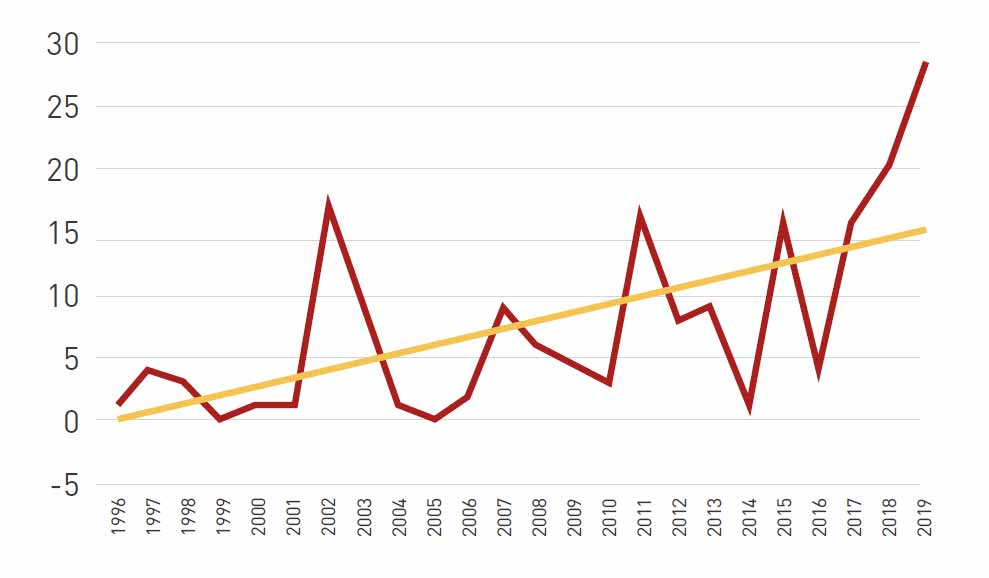Risk management is one of the key challenges facing Australian agriculture. This is more so for the sheep and wool industries than any other sector. AWI has begun a project that aims to deliver to woolgrowers the tools to effectively understand and manage risk. Woolgrowers can provide input into the project by completing a short online survey at www.wool.com/risk.
PRICE VOLATILITY IN THE AUSTRALIAN WOOL INDUSTRY

Figure 1: Index of volatility of national annual agriculture output value, 1961-2009
Australia has one of the most volatile agricultural sectors of any country in the world (see Figure 1) and within Australia agriculture is the most volatile sector of the economy (see Figure 2), when we consider value of output.

Figure 2: Index of relative volatility in annual value of output for selected Australian economic sectors
Within the agriculture sector, sheep farms are the most volatile with regard to price volatility (see Figure 3). Recent studies show a direct link between volatility and farm income.
This continued volatility is most disruptive to orderly marketing and seriously hinders delivery of accurate market signals. We are currently experiencing this at present in the wool market with volatility running at historical highs. Developing a strong forward market that shares the risk along the pipeline will mitigate some of the problems such as delays, defaults and renegotiations that have dogged the export sector during the last year.

Figure 3: Broadacre farm cash income risk by sector. Change in farm cash income (bad year relative to good year)
To put this into perceptive, in the 21.0 Index there have been only six occasions during the past 25 years in which daily movements of greater than 30 cents have occurred on more than 10 days in a calendar year, yet four of those occasions have been in the past five years and the two highest in 2018 and 2019 (see Figure 4).

Figure 4: 21micron daily variance greater than 30c (days per year + trend line)
What is even more disturbing in that we have had already five such movements in the first three weeks of 2020.
High volatility affects the ability to execute the targeted objective of increasing Return on Farm Assets Managed (RoFAM) leaving income margins for woolgrowers at the whim of the rollercoaster of spot prices. This volatility is affecting the whole pipeline resulting in uncertainty that will eventually affect decision making from the consumer right back to the farm gate.
AWI PROJECT TO HELP WOOLGROWERS MANAGE RISK
The lack of risk management tools and education across the agricultural sector has become a focal point for government, financial institutions and peak bodies. Now is the time to position the wool industry as a leader in price risk management (PRM) awareness/training and education.
As such AWI has commissioned a project to:
- Identify the current state of PRM awareness and adoption
- Identify any impediments to PRM development
- Create a body of PRM content using WoolQ as the primary repository. This is to include daily and weekly trade data; weekly reports; forward curve, percentile and price charts. There might also be potential for a 'risk' chat room.
- Monitor and evaluate the effectiveness of engagement and uptake.
The aim of the project is to deliver to woolgrowers the tools to effectively understand and manage risk.
EFFECTIVE PRICE RISK MANAGEMENT
Nobel prize winning economist Joseph Stiglitz said: "Risk is like love. We all know what it is, but we don't know how to define it." Whatever definition of risk might be used, it is important to remember that risk is an inevitable part of life, and most certainly of farming life. It is not something to be afraid of. Profit is the reward of bearing risk. The task is rather to manage risk effectively.
Price risk management is about margin management. Price is not necessarily the most important factor to a successful business. Managing margin is. Effective price risk management aims to meet and manage budgets, enhance and protect margin goals and increase bottom line profitability.
Hedging products, such as wool forwards, need to be simple to understand and versatile in their application. The intended outcome should be the reduction of risk and increase in the stability and the predictability of the financial results.






